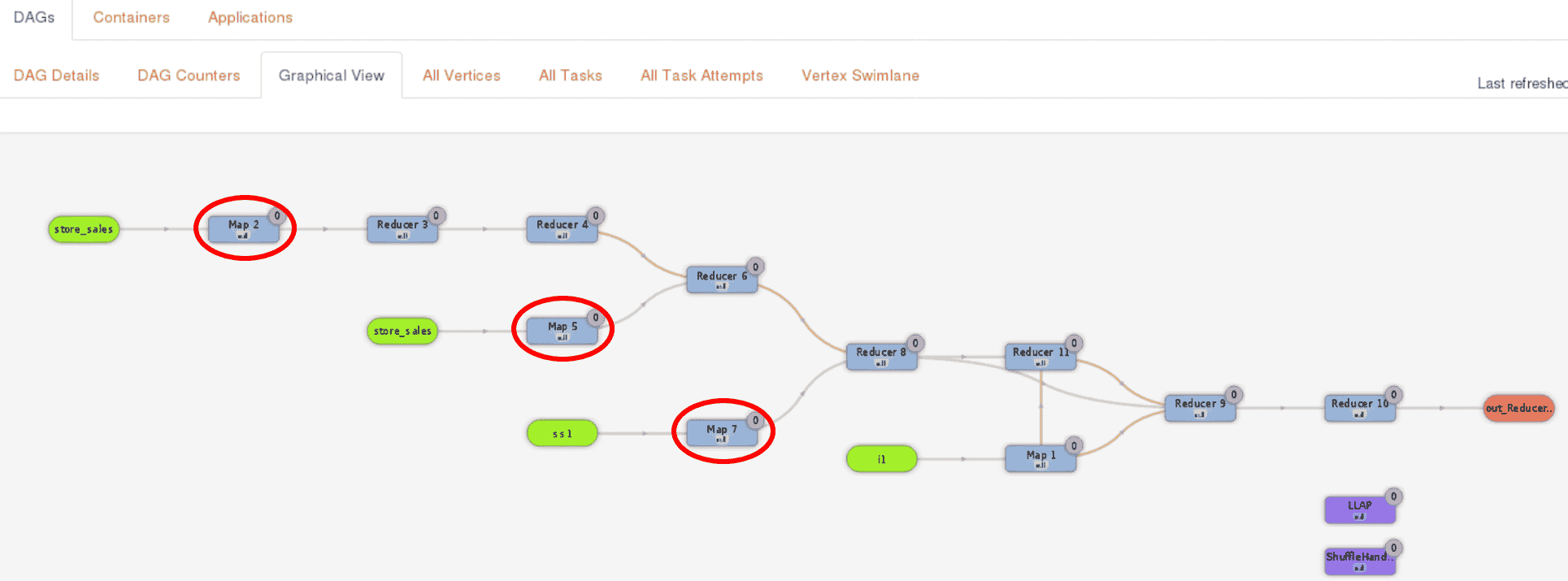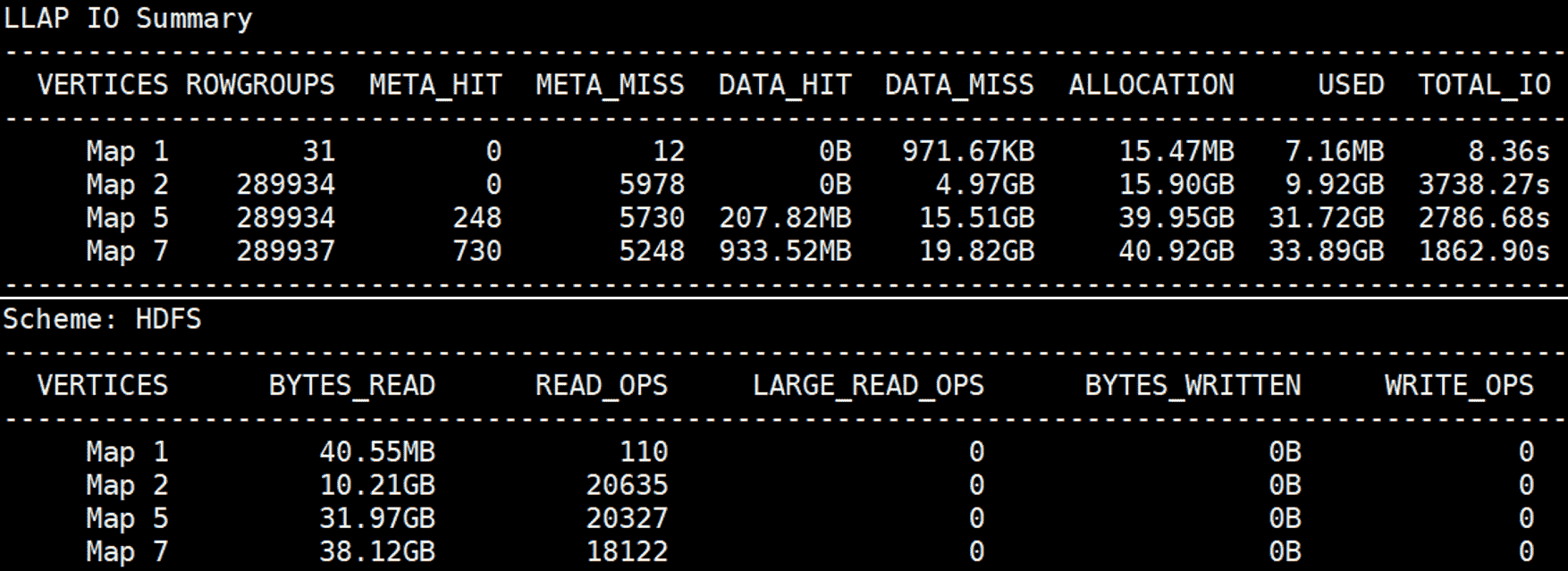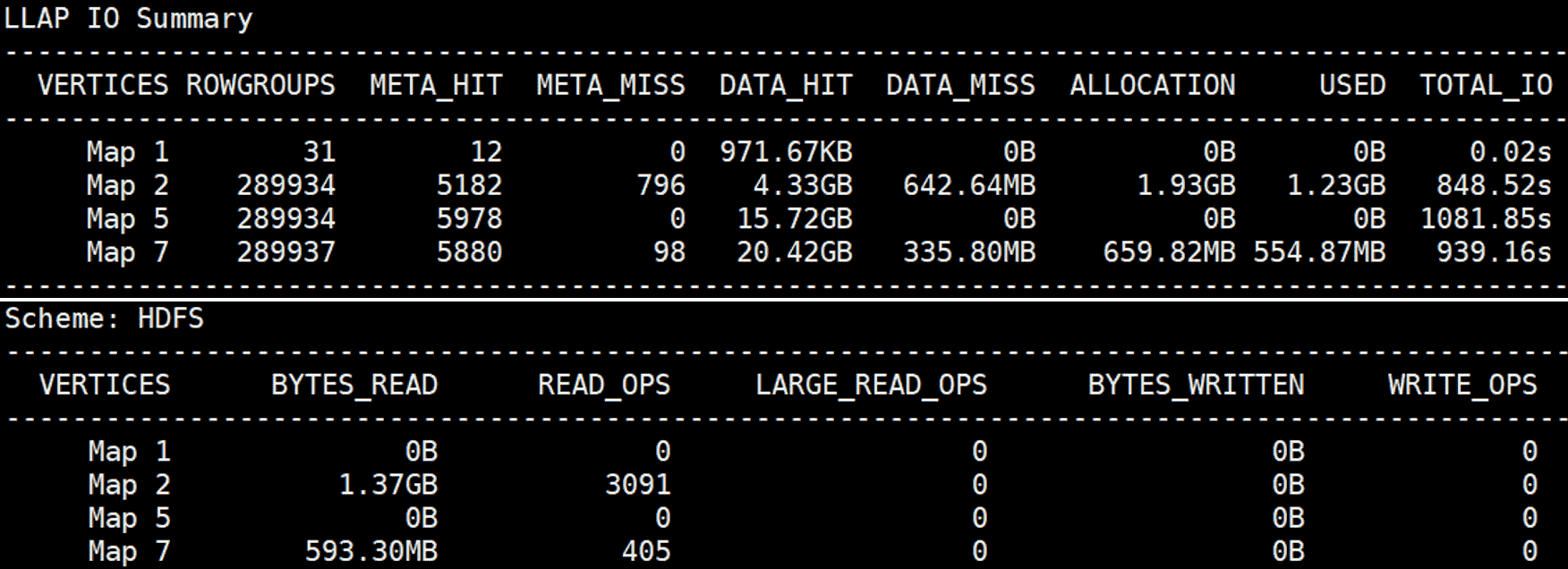LLAP I/O
DaemonTask for LLAP I/O
Hive on MR3 support LLAP (Low Latency Analytical Processing) I/O.
If a ContainerWorker starts with LLAP I/O enabled, it wraps every HiveInputFormat object with an LlapInputFormat object so as to cache all data read via HiveInputFormat.
In conjunction with the ability to execute multiple TaskAttempts concurrently inside a single ContainerWorker,
the support for LLAP I/O makes Hive on MR3 functionally equivalent to Hive-LLAP.
By virtue of DaemonTasks already available in MR3, it is easy to implement LLAP I/O in Hive on MR3. If LLAP I/O is enabled, a ContainerGroup creates an MR3 DaemonTask that is responsible for managing LLAP I/O. When a ContainerWorker starts, a DaemonTaskAttempt is created to initialize the LLAP I/O module. Once initialized, the LLAP I/O module works in the background to serve requests from ordinary TaskAttempts.
Example of using LLAP I/O
To illustrate the benefit of using LLAP I/O for Hive on MR3, we show the result of running query 44 of the TPC-DS benchmark on a dataset of 1TB. We use two separate clusters connected over 10 Gigabit network: a compute cluster for running Kubernetes and a storage cluster for hosting HDFS. Query 44 spends most of its execution time on three Map Vertexes (Map 2, Map 5, and Map 7 in red circles in the following screenshot from MR3-UI):

In the first run, the cache for LLAP I/O is empty, and the three Map Vertexes read 80.3GB of data from HDFS (BYTES_READ in Scheme: HDFS),
which is all read from local disks in the storage cluster and then transferred over network to the compute cluster.

After a few runs, the cache is populated with input data, and the three Map Vertexes read only 1.96GB of data from HDFS (BYTES_READ in Scheme: HDFS)
while most of the input data is directly provided by LLAP I/O (DATA_HIT in LLAP IO Summary).
As a result, we observe a significant decrease in the execution time.
